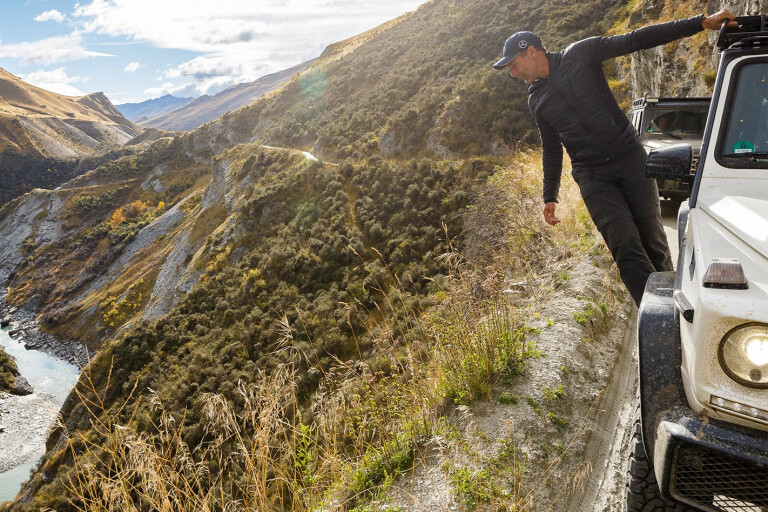
YOU CAN tell a lot about a man from his handshake.
First published in the June 2017 edition of Wheels Magazine, Australia’s most experienced and most trusted car magazine since 1953.
Mike Horn clamps you like a garbage compactor and then begins a process which feels as if he’s trying to dismember your limb with the intention of beating you with the soggy end. In his defence, I can understand why.
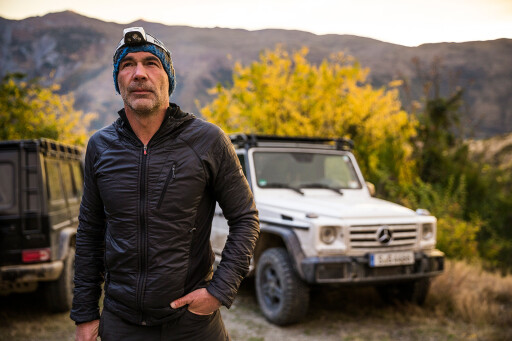
The world’s greatest living explorer runs his expeditions with military precision and we’d missed our flight to meet him in New Zealand. I didn’t have the fortitude to tell the Swiss-based adventurer that his plans had been derailed by the temptation of a McFlurry and that was why he was waiting in the dark in a parking lot at Queenstown airport. He grins and informs us that he has some real fun in store. As we get into the waiting Mercedes G-Class, it’s apparent that we might have ventured a little out of our depth.
If you’re not acquainted with Horn’s canon of work, here’s a quick primer. He’s climbed 8000m peaks in the Himalayas without oxygen, he’s traversed the length of the Amazon on a boogie board, walked to the North Pole in the permanent darkness of winter, circumnavigated the globe at the equator under his own steam, and then done the same with the Arctic circle. At the moment he’s part way through Pole to Pole, an expedition that starts and ends in Monaco and which, as its name suggests, takes in solo crossings via the North and South Poles.

He’s been in the South African special forces, he was a gold diver in the Amazon, has been commissioned by the German soccer team and the South African and Indian cricket squads for motivational coaching, has designed and built Pangaea, a 35-metre aluminium-hulled ice-breaking yacht, and won the Laureus World Alternative Sportsperson of the Year award.
With the first solo, unsupported crossing of Antarctica just completed in a record time of 56 days and 22 hours for the 5000km journey, he’s just been reunited with the pair of G-Class expedition vehicles that Mercedes has supplied him with and is looking to point them at the South Island’s wildest spots. What’s more, because he finished his Antarctic crossing so far ahead of schedule, we’re invited to eat the spare polar rations.
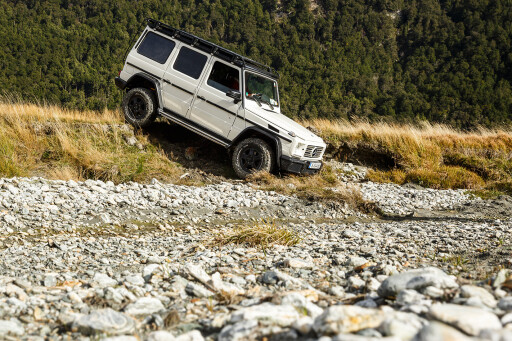
Bags of vacuum-sealed scroggin aren’t at the forefront of my mind right now. We’re at the top of a steep, lumpy goat track that we’d driven up to our camp site the previous night. I’m relieved that we bumped up it in the dark, as the precipitous drops off the side disappear into flinty oblivion way below. It’s the sort of track that would beggar belief that a roadgoing vehicle could be driven up it, all polished bulges, rain runnels and loose rocks. Horn noses the G500 down, straightens the wheels and then mats the throttle.
It’s a badge of honour for a motoring journalist to never be a nervous passenger, but this is beyond any sort of off-road driving I’ve ever experienced. The speedo heads north of 120km/h as the heavily laden G-Class descends like a skipping stone, revs flaring as wheels kiss and release from the ground. Horn’s sawing at the wheel, grinning, as the other vehicle becomes a black blur in the rear view. I’m just waiting for one malign combination of dips and ramps to send us into some sort of inverted death corkscrew.
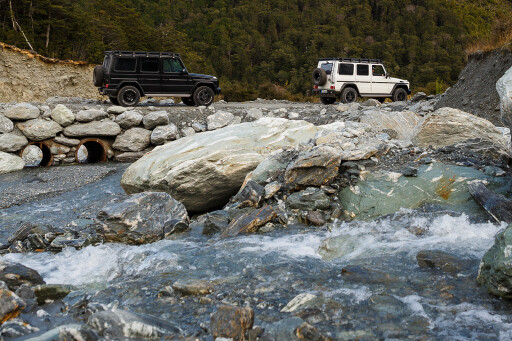
“I’m a terrible road driver,” he laughs. “Too fast, too heavy on the brakes. The authorities in Switzerland keep making me do assessments of my mental attitude to driving,” he says. I can see why. What he lacks in mechanical sympathy, he makes up for in demented throttle commitment but he’s 50 now, so I guess he knows what his limits are. We come to a shuddering halt at a sheep gate and wait for the other vehicle to appear on the horizon.
“Having these vehicles as a tool makes my life as an explorer more complete. I can load my stuff into my space. I don’t want to fly over in a plane or a helicopter like I used to in order to access these remote places,” explains Horn. “I want to travel, to see new things, to learn from the people, taste their food, smell their smells and understand better who they are and why they’re like that because that landscape determines the people that live in that country. The landscape develops who you are. The cars have become my travelling companion. Where the car stops, I start on foot,” he tells me.

“I’ve never been able to afford a new car in my life. I’m a bit of a petrolhead and love old-timers but I’ve never had that sort of money,” he admits ruefully. “All of my money is sunk into expeditions and you can’t really make a living in this job. It’s not a commercially valued activity. The money I was paid by sponsors for the Pole to Pole expedition just about covered the insurance on my boat. It didn’t even cover the fuel,” he says. It doesn’t take long for the smile to come back as we drift into an errant patch of FM radio coverage. “I love James Blunt.”
In his downtime since Pangaea berthed in Dunedin, Horn and his daughter Annika have been criss-crossing the South Island looking for remote spots in which to bog a G-Class. It’s clearly been a diligent bit of preparation, as our route crosses remote sheep stations, punctuated by wild camping under kaleidoscopes of stars. We wade through river deltas in the shadow of Tolkienesque glaciers and inch along narrow canyon roads with centimetres of space between the dizzying precipices and soaring rock walls. One day we’re edging through mossy forests, the next forming an express dust cloud soundtracked by yammering V8s across deserted mile-wide glacial valleys.
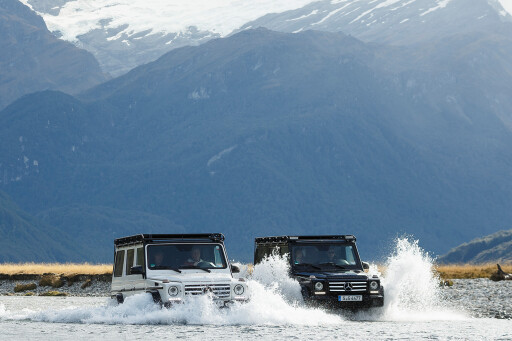
The G-Classes are largely stock apart from extended fuel tanks, roof bars and upgraded Öhlins shock absorbers. Horn took delivery of them a year and a half ago, and they’ve already been up the Skeleton Coast of Namibia and across most of Africa, through Russia and Kazakhstan along the Karakoram Highway, escorted into the tribal areas in north Pakistan en route to K2 with the top cover of a duo of US drones. You might expect them to feel a little loose and smell a bit funky, but they feel as tight as a drum. Not one annoying squeak, James Blunt notwithstanding.
If there’s one theme that runs through Horn’s expeditions, it’s a certain quest for authenticity; to do things the right way. Often that comes at the cost of commercial success.
“You try and set rules and regulations that you live by. You’re the person that puts your life in danger,” he muses. “It’s not a commercial event. It’s not another tennis or golf tournament or F1 race. It’s about a human being who’s willing to go out there and to pioneer new frontiers. But at the same time you’re so fragile. You can lose everything. I’m always in the shit. It’s just the depth that varies.”

He’s now at an age where his sponsors no longer push him to do wilder and more extreme things. “If anything they try to rein me back,” he admits. His daughter Annika informs us that Horn lost 16kg on the Antarctic crossing, despite consuming over 16,000 calories a day on the ice cap. “Because he’s 50 now, he loses weight faster. He can’t retain that muscle mass for so long,” she says. He’s carrying a shoulder injury, sustained on the crossing, that causes him to wince when winging stones into the glacial meltwater below Mount Earnslaw.
“I broke the socket in my shoulder; the bit that supports the ligaments. The sled jammed nose into the snow while kite skiing so the kite just picked me up, turned me round and slammed me into the ice a couple of times. I couldn’t get to the quick release, so I had to pull out a small knife and cut the lines to the front of the canopy,” he says. It’s far from his only close call on the ice. “I set fire to my tent once. I was changing a gas bottle in the tent. The temperature outside had risen suddenly by 20 degrees and I’d left the pilot light on without noticing. Just a tiny half-flame. As soon as I opened the new bottle, the vapour spread and ignited and I lost everything. From that point I was in igloos.”
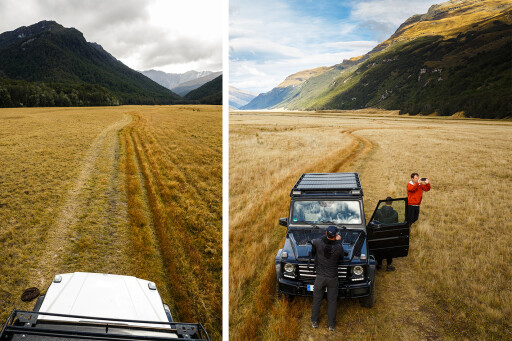
Then there are run-ins with wildlife. On the winter trek to the North Pole he had an uncomfortably intimate spooning experience with a polar bear.
“I was asleep in my tent and the bear climbed onto my sled and started trying to tear it apart to get to the food,” he says. “It rolled onto the tent at one point and I was pinned under its belly. I said to Borge [Ousland, his trekking partner], ‘Get the flare gun. There’s a bear in my sled!’ He just rolled over and said, ‘It’s not in my sled.’ And that was it. We didn’t really get on; barely spoke two words a day on that expedition. He was ice cold. Now we’re the best of friends.”
Later that evening, we sit by the fire sampling some of Horn’s polar trekking food. There’s the usual freeze-dried boil-in-the-bag stodge as well as some fantastic home-made creations, most of which are steeped in olive oil. Honey and butter bites, packet soup loaded with Pringles to form a salty slurry, porridge laden with olive oil, white chocolate and almonds, it’s all calculated with a fanatical attention to weight and nutritional value.
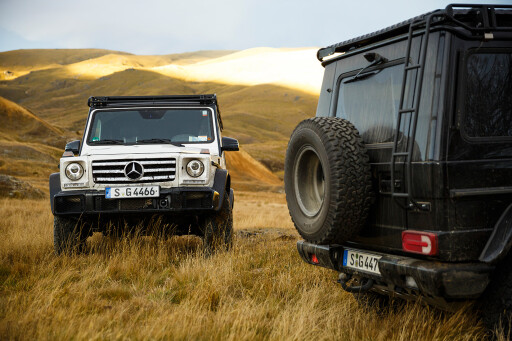
“Olive oil has twice the calories per kilo than chocolate,” he says, “but there’s only so much you can eat. On the ice I craved the feel of a juicy peach, and fresh baked produce like a chocolate croissant. You can’t bring any food that has the potential to damage your teeth. Cleaning your teeth is tough because you have to thaw the toothpaste. I pee in my tent. I shit in my tent. When it’s minus 60°C outside I’m not motivated to get out of the tent but you have to balance motivation and discipline. That’s when discipline takes over.”
Like most professional sportspeople, Horn has a good line in well-rehearsed motivational soundbites. “The will to win must become bigger than the fear to lose” is one. “The impossible only exists until we find a way to make it possible” is another.
Then there’s “We have 30,000 days in a lifetime. Live each one to the fullest.”
I’m keen to understand what motivates him; what’s beneath the bonhomie and the platitudes. Persistent needling eventually pierces the defences. Jabbing at the bonfire with a stick, his black eyes flash with anger and you see the steeliness beneath.
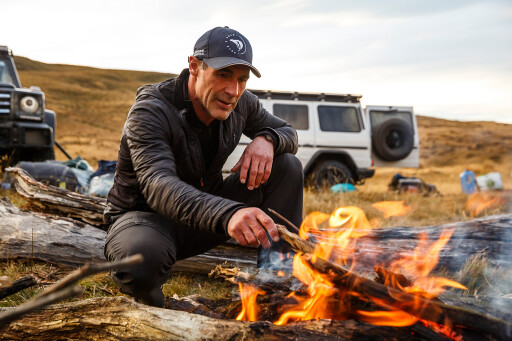
”What drives me on? I don’t want to be an international laughing stock,” he mutters. Peer approval matters. Authenticity counts for everything.
Spend more time with Horn and you see more of that essential steeliness. He’s phenomenally capable and unfazed by obstacles. He talks of his time at war in Angola, dealing with gun-running mercenaries protecting shipping from Somalian pirates, and of watching men lose their lives in Brazilian sluice mines.
“Gold doesn’t attract good people,” he says.
“These guys would be climbing riverbanks on ladders made of sticks, carrying bags of sand. The ladder breaks, they fall to their deaths. Next guy.”
He worked for a while as a diver tasked with sucking gold-laden sediments from the bottom of an Amazon tributary.
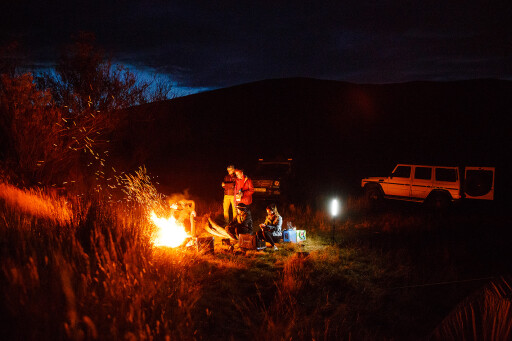
“You’re aware that if you hit a rich sediment, that the guy manning the compressor on the boat can just click it off and you’re gone. I always paid my colleagues more of my share than I needed to.”
When asked by his daughter if they could go back to South America his brow furrows. “That’s a place for young people,” he says. The statement brooks no argument. Later that day he spots a rabbit in the road and as it jinks to escape, he steers the G-Class towards the embankment, flattening the invasive species. “Bastards,” he grunts. I suddenly feel self-consciously soy Melburnian.
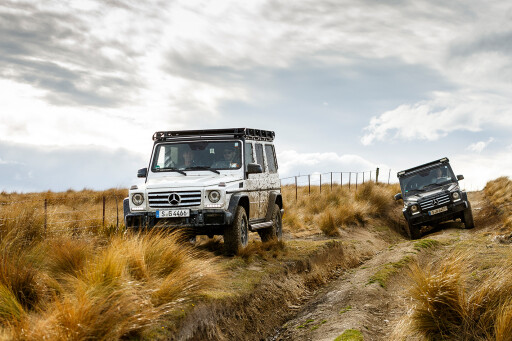
From New Zealand, the Pole to Pole expedition travels to Australia, then up to Papua New Guinea, then up into Asia where essential repairs will take place on the battered Pangaea. From there it’s Japan, Kamchatka, the lonely trek to the North Pole and then south, eventually landing back in Monaco. Patiently weathering a few days in New Zealand with a couple of blokes who can’t put tents up, have an uncanny ability to walk cow shit through the camp and have yet to master the complexities of a boarding pass seems to have come as welcome downtime.
Way out on one remote treeless sheep station, we find an abandoned Nissan Pintara. It’s been rolled, stripped and peppered with buckshot.
“Let’s drive over it with the G-Class!” he shouts, alive with childlike glee. Our Mercedes-Benz chaperone’s eyes widen in panic, his mouth forming a perfectly mute little ‘o’.
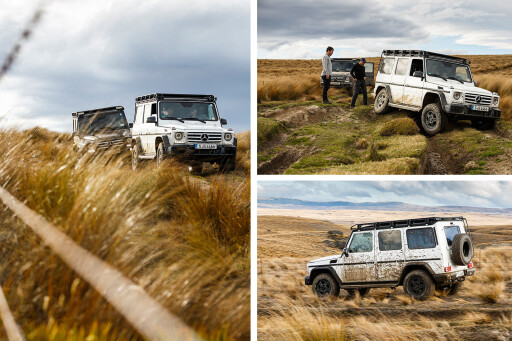
You can’t control Mike Horn. He’s a force of nature, probably the most interesting person I’ve ever interviewed. To him, we’re just another round of press. As we leave for home, there’s that big smile, the inspirational quote and the mole-grip handshake again.
We’ve just accounted for four of the world’s greatest living explorer’s 30,000 days. He’s experienced more than his fair share in this one lifetime, so we don’t feel too guilty about acting as ballast for a bit. The V8 fires up, the G-Class bumps over a bushy median to the car park exit and Horn’s headed back to the dock at Dunedin.
He’s that naughty kid whose antics you just can’t help laughing at. You know you shouldn’t.
But, hey, life’s too short to worry about things like that.
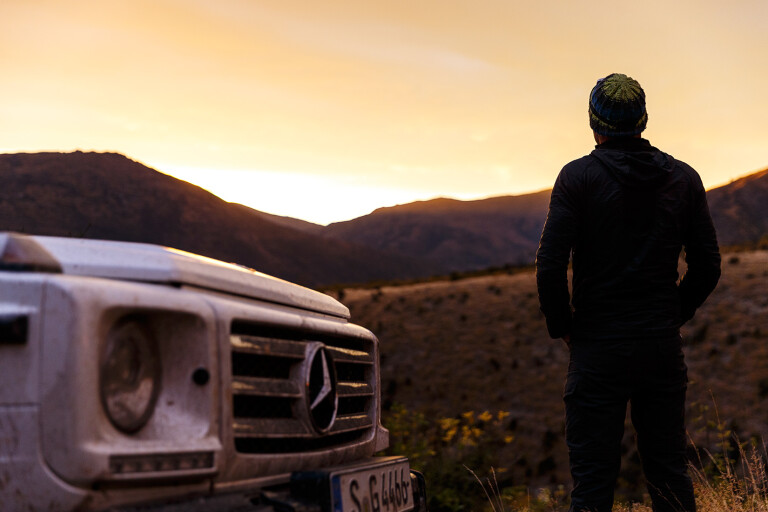



COMMENTS